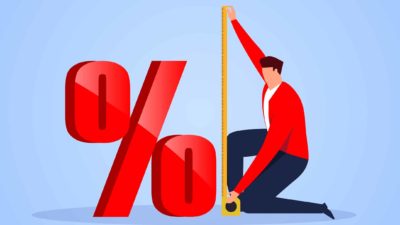Even though Australian consumers and businesses have just copped an incredible 12 interest rate rises over 14 months, the economy is proving to be robust.
Unemployment is still historically low and consumer spending has not dived as much as the Reserve Bank would like, despite soaring mortgage repayments and huge power bills.
Many experts, such as AMP Ltd (ASX: AMP) economist Diana Mousina, attribute this to the significant savings that Aussies had built up over the COVID-19 lockdown years.
"We had thought that consumer spending would have fallen by more now than it has," Mousina said on the AMP blog this week.
"Consumer spending appears to be supported by a high level of pent-up savings that has allowed households to cushion some of the recent negative hits."
This has allowed ASX shares, especially those directly involved in consumer goods and services, to stay resilient.
But this buffer is depleting as we speak. It's not a matter of if, but when, savings will run out.
Mousina set about forecasting when that devastating cliff fall might come for Australia and ASX stocks.
Why do Australians have large savings at the moment?
Firstly, the economist explained that savings had grown during the pandemic years because Aussies were simultaneously not spending on big ticket items and receiving government welfare.
"In 2020, the savings rate shot up as consumer incomes got a boost from numerous government stimulus packages (JobKeeper, JobSeeker, one-off pandemic cheques for low and middle income households, free childcare, access to superannuation and freezing of housing repayments) and consumer spending declined as services were limited in lockdowns and high uncertainty made consumers cautious about spending."

Since 1959, the percentage saved by Australian households compared to income has averaged 9.4%.
In March 2020, immediately after COVID-19 struck the world, this rate rocketed to a record high of 23.6%.
"This meant that through 2020 until mid-2022, consumers were building up additional savings that would not have existed without the COVID-19 pandemic.
"On our calculations, this excess savings reached a high of $253 billion and 11% of annual GDP or 22% of annual consumer spending."
Some Australians will feel the pain a lot earlier than others
Mousina said that, up until March this year, consumers had still only used up 7% of their excess savings.
But the depletion will accelerate remarkably in the second half of this year.
"We expect the run-down of savings to pick up pace throughout the remainder of 2023 because of the lagged impact of prior rate rises, the roll-off of fixed-rate mortgages to variable rates that are 2 to 3 times the level they were fixed at and from impacts of elevated inflation which is a hit to consumer purchasing power."
That means that Mousina is predicting Australians will run out of money by late 2024.
But many consumers will be in considerable strife well before then, because the impact of higher interest rates is felt more acutely by younger households.
"On our forecasts, consumer spending will slow significantly over the next 12 months as excess savings fall and housing mortgage repayments rise to a record high," she said.
"There is also a chance that accumulated excess savings never completely go back to pre-COVID levels, if households have locked them away in deposits or investments, especially as it looks like accumulated excess savings are concentrated in older households, who are less likely to be stressed by high interest rates."









